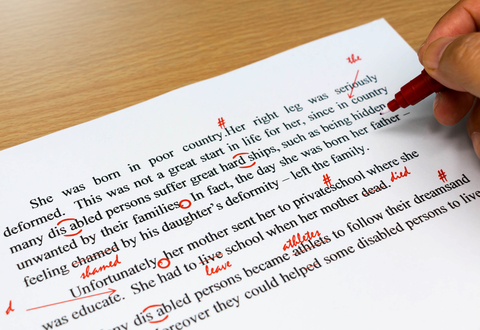Based on their job title, it’s easy to think that a translator’s only duty is to translate, but a good translator also needs to be a skilled editor. A good translation often goes through several stages of editing, which is just as important as the translation process itself, because it helps refine the work and spot mistakes. But how should we edit a translation, and what should we look for while doing it? Here are some suggestions.

Look through the translation only
It’s possible to be too “close” to your own work. Artists will say that after hours of slaving over a piece of work and still feeling unsatisfied, they have to step away for a while to give themselves some distance. Coming back later with a fresh view, they might instantly see what’s wrong and know where to put the finishing strokes. As a self-editor, translators should do the same: a few days after you’ve done a translation, come back to it and reread it as if it were originally written in the target language – that is, without looking at the source. The combination of a fresh look and reading the target text by itself can help you judge whether the translation flows well in the target language, sounds idiomatic, follows the structure of the source too closely, etc. Taking a fresh look will also help you identify errors in spelling, punctuation, grammar, etc., which you may have missed the first time around. Of course, that doesn’t mean you can completely toss out the source as soon as the first translation draft is done, which brings us to the second suggestion.
Compare the source and target text
After reading the translation, the second step is to refer back to the source text to see if there are any meaning errors, omitted information, etc. Avoiding any meaning shifts is always on a translator’s mind, but it’s possible to make them without realizing, which is why comparing the source and target again is necessary. Editing a translation, just like translating itself, requires solid command of both languages in order to feel the subtle differences between them and tell whether the translation is a proper rendition of the source text. Be particularly attentive that terminology is translated correctly, and consistently. Make use of term bases provided by the client or agency, and don’t be afraid to ask for them if they haven’t been given.
Format checking
After making sure the content is all good, the last step is to check formatting and layout of the translation. This often may be as simple as matching font and font size, making sure that a few bold, italic, or underlined words in the source are mirrored in the target, or that a hyperlink is in the proper place. Other documents may be formatted in a more complex way, with tables and images which need to be properly recreated or inserted.
The fundamental aspect of producing a translation may be, well, translating, but skilled and careful editing is also imperative. How many authors can write a novel without ever looking at what they’ve written? Following the above three steps will provide a good basis for editing a translated work properly in order to get it ready for delivery.


 (4 votes, average: 4.75 out of 5)
(4 votes, average: 4.75 out of 5)

Leave Your Comments Below